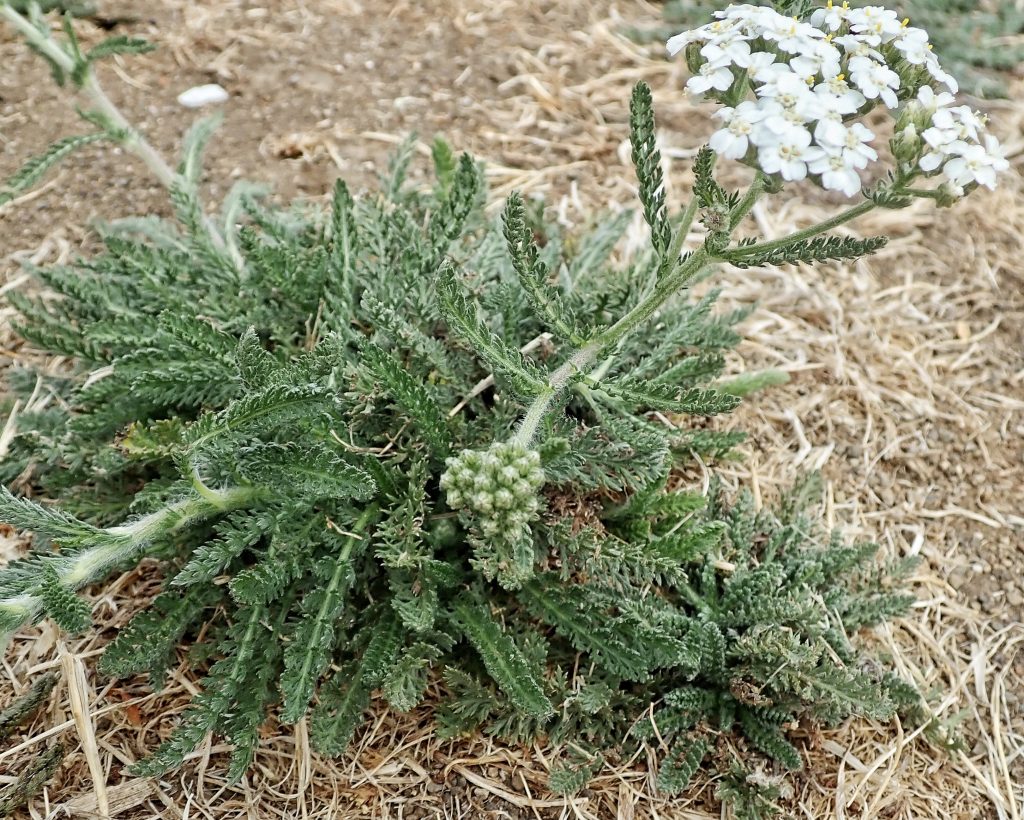
In our region this wonderful, circumboreal member of the family Asteraceae is composed of both native and exotic strains. This has historically been a popular garden plant, with seeds and cuttings imported from Europe that have often escaped from cultivation. Even outside of the human selection process that resulted in many different cultivars, it is also an amazingly adaptable species, forming ecotypes in many different environments, which has led to a plethora of varieties and even named species. While some of the varieties are still recognized, they intergrade so often that identifying one to subspecies is tricky at best. And virtually all of the named species of Achillea that one may find growing wild in our region have now been synonymized with, and subsumed under, the banner of Achillea millefolium. In various cultures of the Northern Hemisphere it has also been called gordaldo, nosebleed plant, old man’s pepper, devil’s nettle, sanguinary, milfoil, soldier’s woundwort, thousand-leaf, and thousand-seal.
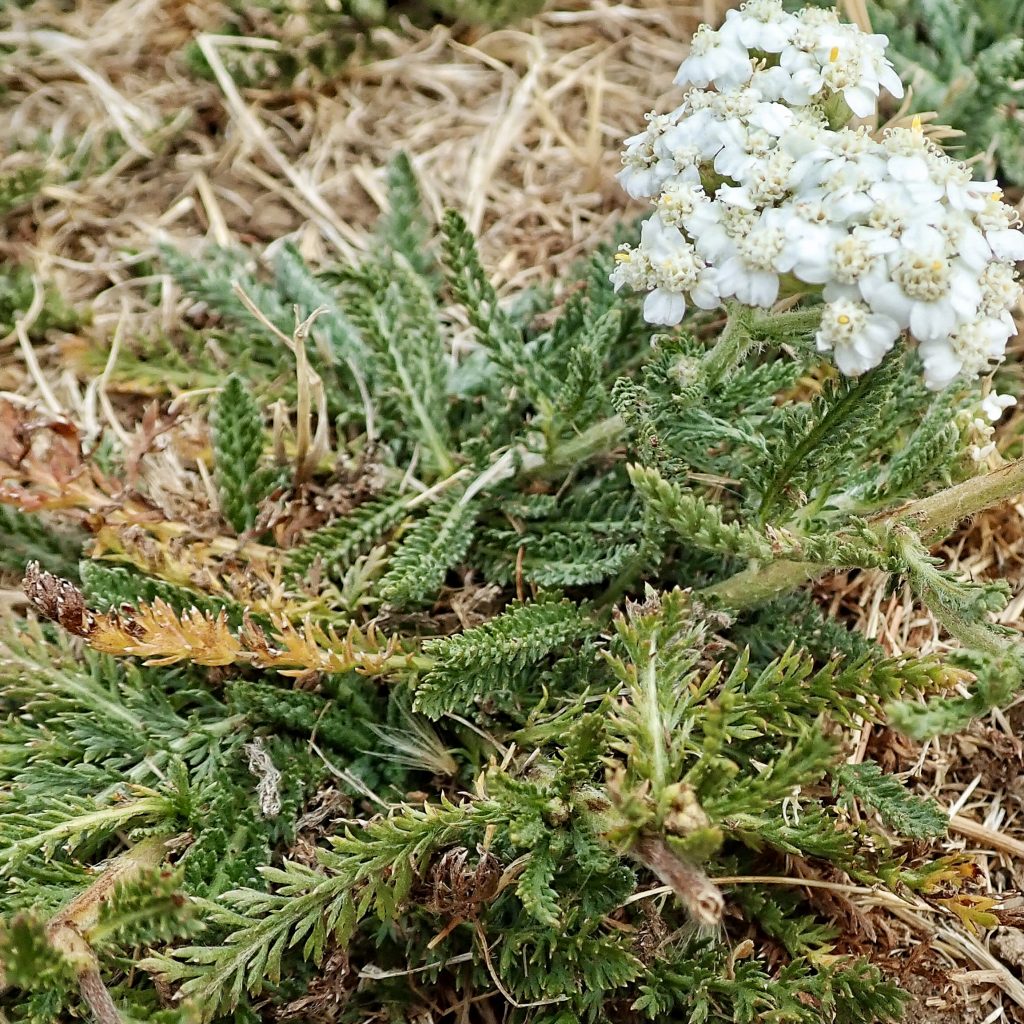
Yarrow is a plant of many, many uses. Yarrow sticks are the traditional means of auguring from the I Ching, and a greenish yellow dye can be made from the flowers. People have grown it to discourage garden pests, and burned it to ward off mosquitoes. A fertilizer can be made by soaking the leaves until they decompose, and an ingredient in compost activators is made from powdering the whole plant. And the aromatic seeds and leaves can be used in sachets.
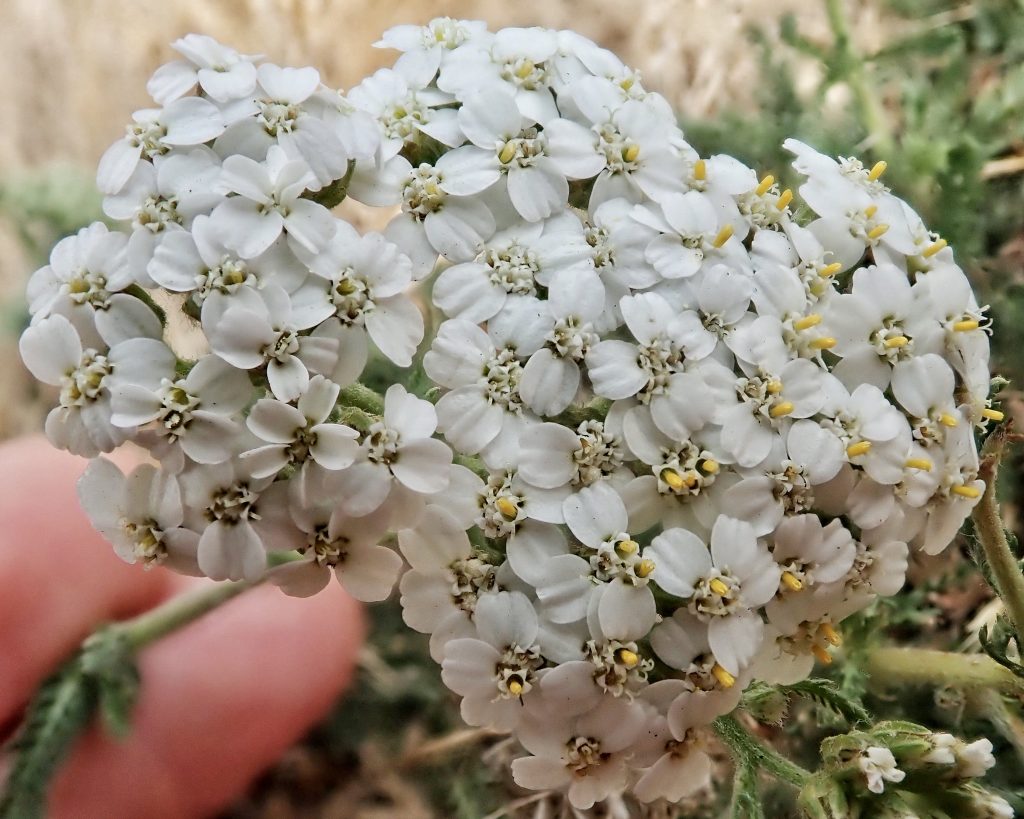
Though the young leaves can be eaten raw or cooked, and have been used to flavor and preserve beer, and the flowers are used in tea or rendered for their oil as an ingredient in cold drinks, it is in its pharmacological usages that this plant really shines. A very incomplete list of the medicinal purposes for this plant includes treating colds, fevers, kidney disorders, bleeding of all sorts, and as an anti-inflammatory, antiseptic, and vasodilator. It also can be used to treat skin problems, headaches, nausea, angina, and was frequently used as a diaphoretic to induce sweating. For a more complete list of the purposes to which yarrow has been put by the indigenous cultures of North America I highly recommend perusing the 366 entries at the Native American Ethnobotany Database. And, as always, medicinal applications should only be performed by knowledgeable herbalists, since excessive dosages and extended use can cause many more problems than they cure. This applies equally to eating any previously untried plant, because unknown sensitivities, and even severe allergic reactions, may be provoked by its ingestion.
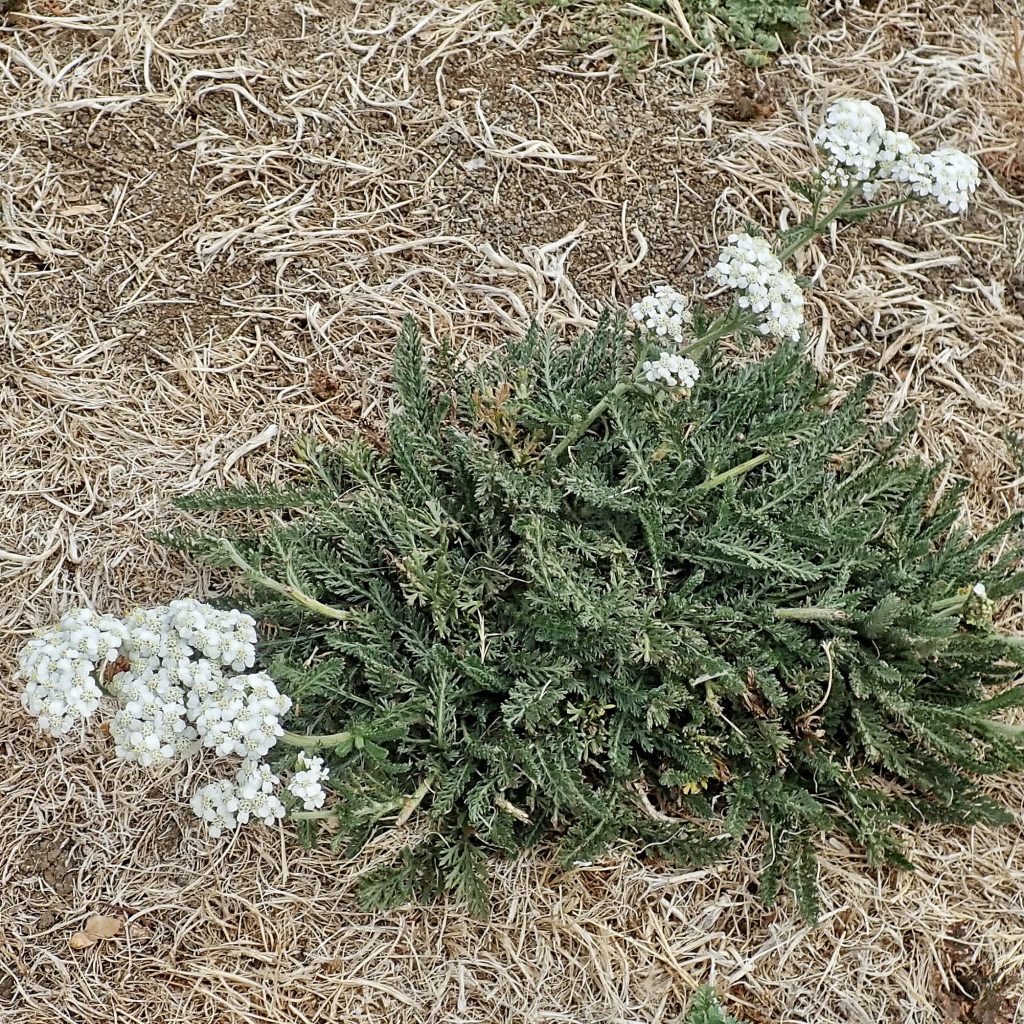
A note on the photos- the plants pictured here were growing in a grassy area near a local high school, and are subjected to mowing on a regular basis. The vast majority of yarrow I have seen in my time was much taller than these specimens. However that height made them prone to being disturbed by wind, and I have seldom been happy with the photos I’ve taken of this species. These clumps provided me with good, instructional photos, in a controlled setting.
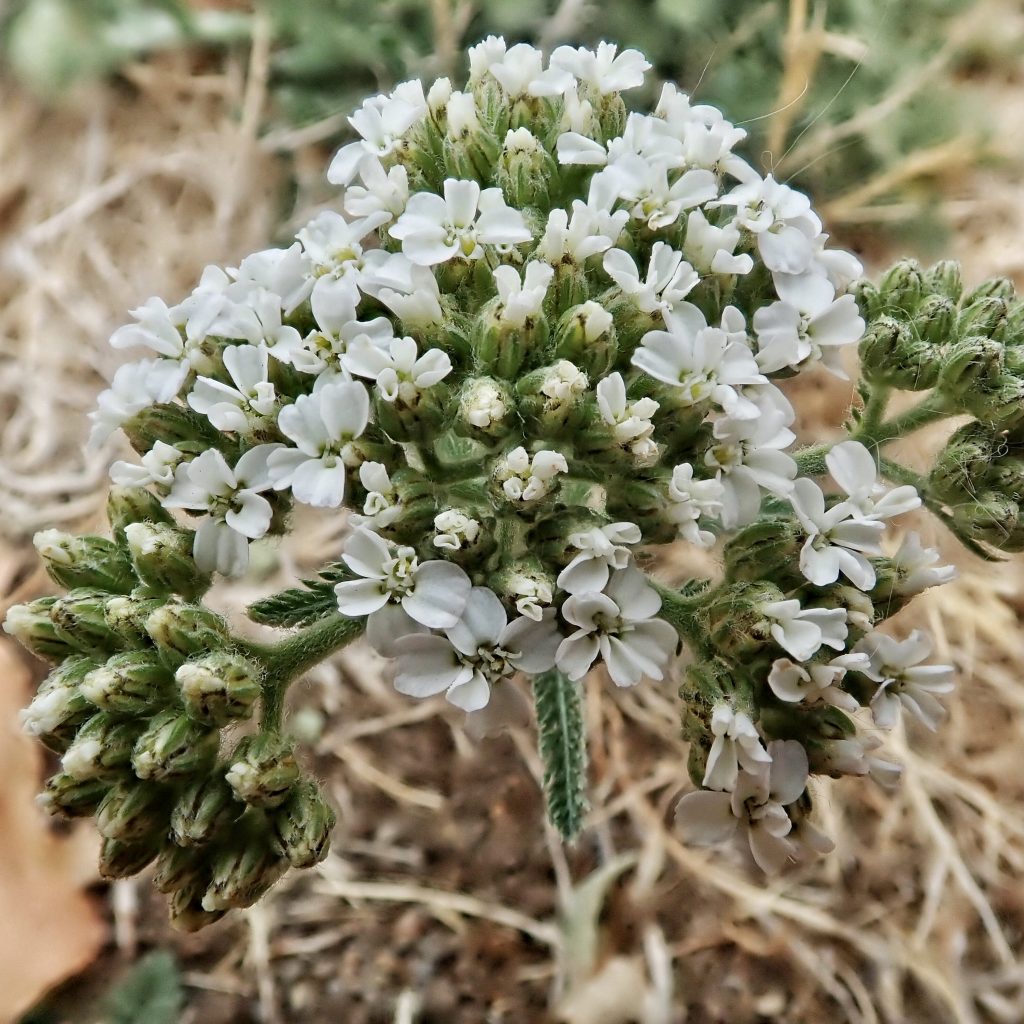
Description-Perennial clumps with multiple intertwining branches and dark green, aromatic, thrice pinnate, deeply dissected leaves, from which spring erect stems up to 36” tall, that have clasping leaves all of the way up to a flat topped inflorescence of many small, white to cream to pink flower heads, with 5 rays and 10-30 disk flowers.
Similar species– A. filipendulina has yellow flowers; Daucus carota has no leaves on flowering stems, and the basal leaves are not as deeply dissected; other plants with similar inflorescences have vastly different leaves, and other plants with deeply dissected leaves have much different flowers and inflorescences.
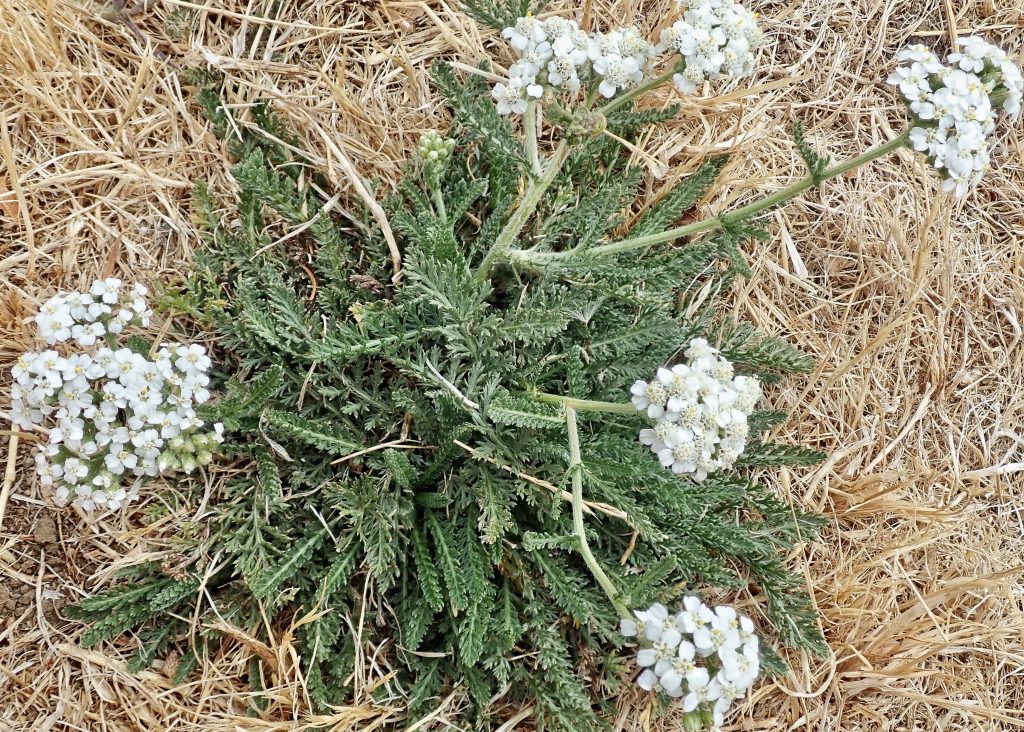
Habitat-Damp to arid open areas, forest edges, fields, meadows, disturbed ground to high elevations; basically everywhere there is at least moderate sun and some nutrients in the soil.
Range– Circumboreal; region wide.
Reproductive timing-Blooms February to October
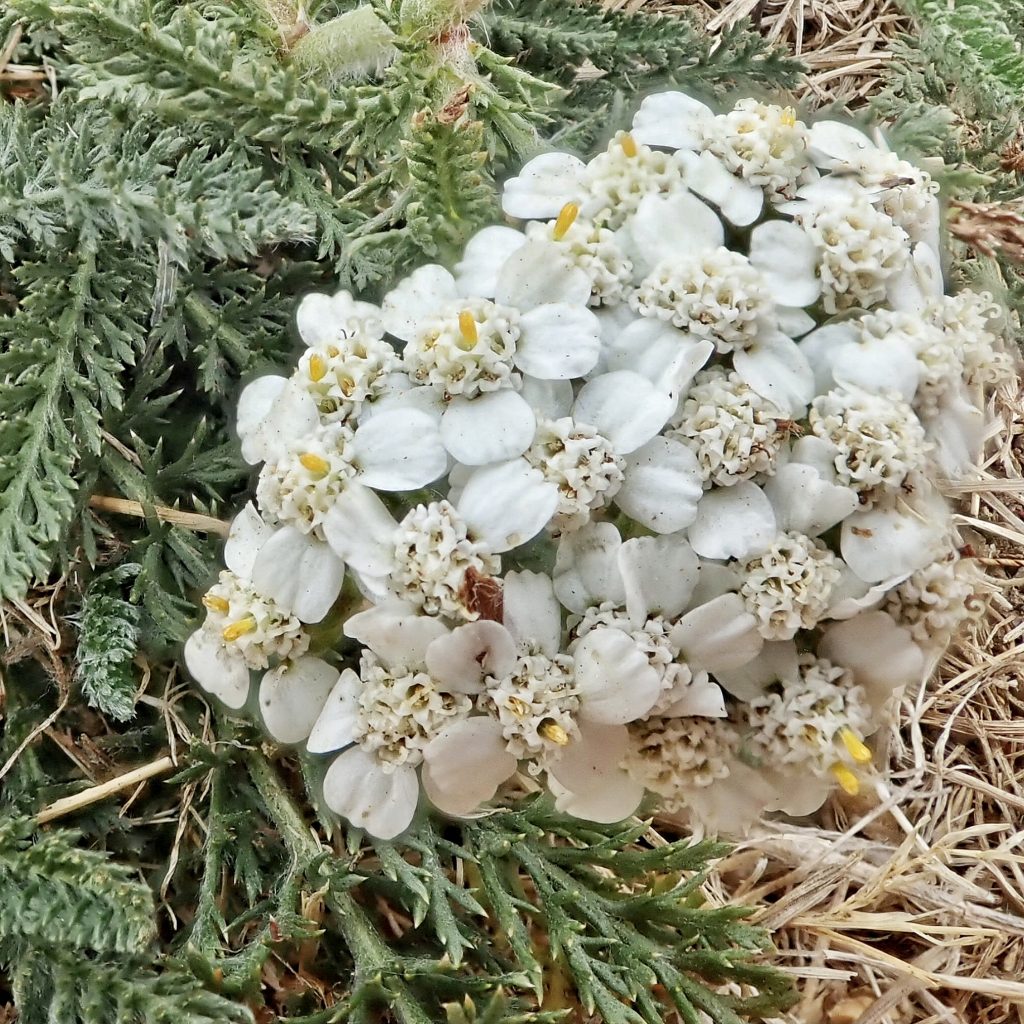
Eaten by-Used as a larval host by the noctuid moths Homorthodes furfurata and Lacinipolia olivacea, the plume moth Gillmeria pallidactyla, and the tortricid moths Aethes smeathmanniana and Sparganothis senecionana, as well as the leaf beetles Diachus auratus, Pachybrachis hybridus, and Pseudoluperus longulus, and probably leaf mining flies in the genus Liriomyza; the flowers are attractive to almost everything that consumes nectar and pollen; not much browsed by herbivores, and when they do it’s usually the flowers.
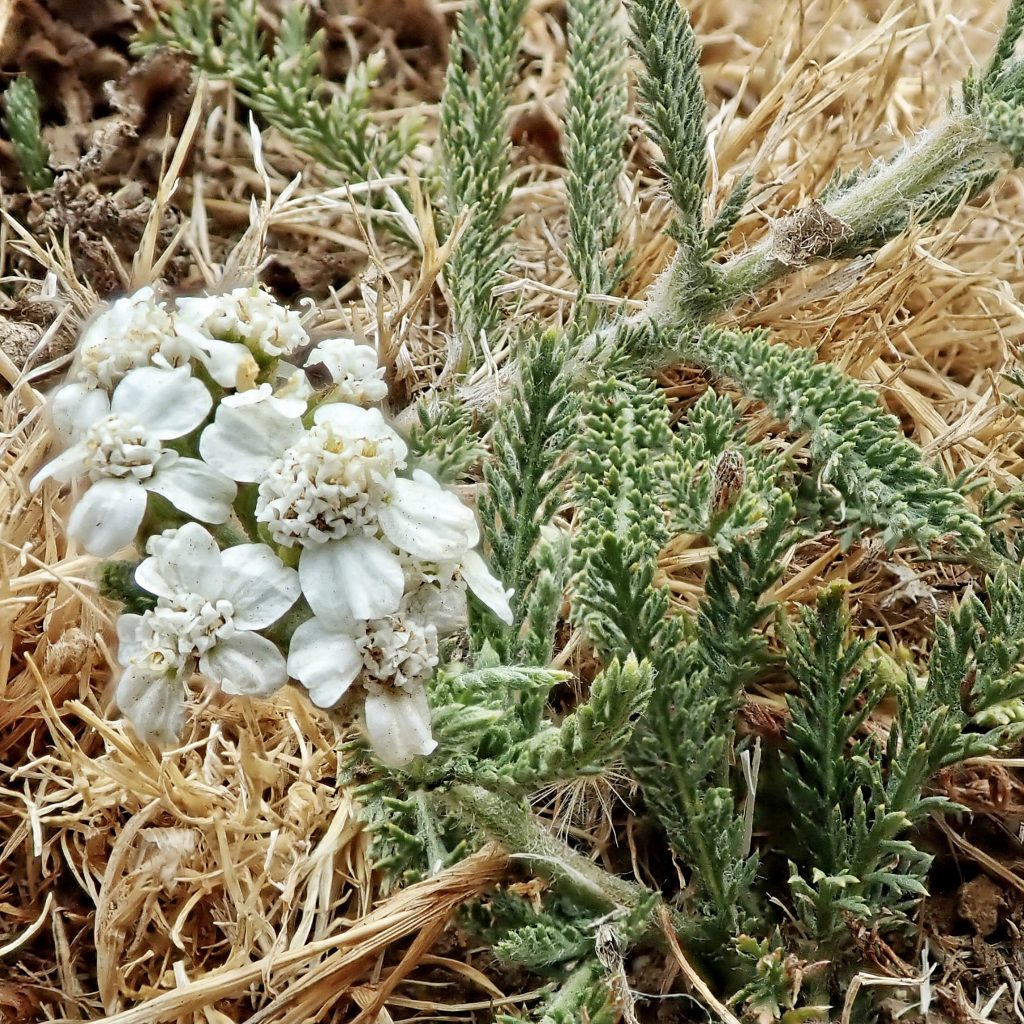
Etymology of names–Achillea refers to the Greek god Achilles, who was purported to use this plant to staunch blood flow of his troops from battle wounds. The specific epithet millefolium is from the Latin words for ‘thousand leaved’, referring to the deep, feathery dissection of the leaves.
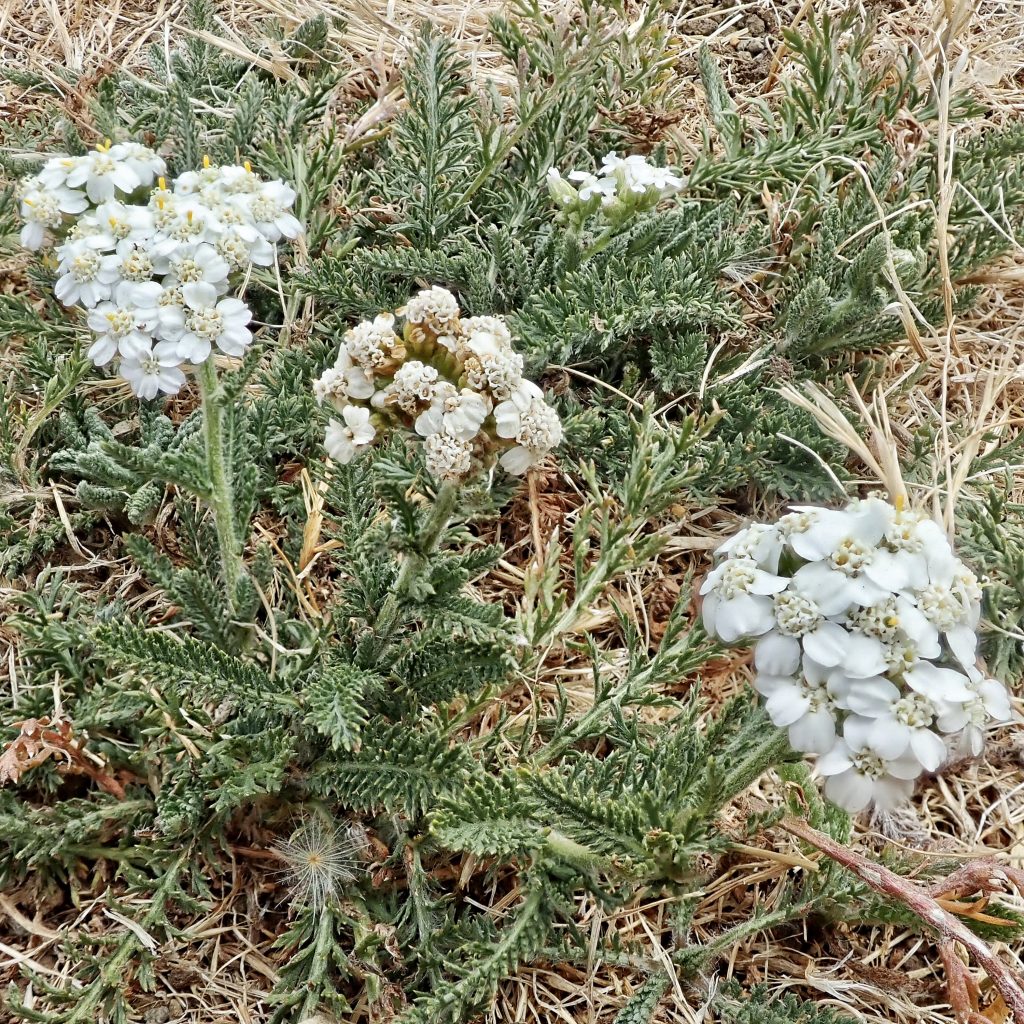
https://calscape.org/Achillea-millefolium-(Common-Yarrow)
BRIT – Native American Ethnobotany Database
https://pfaf.org/user/Plant.aspx?LatinName=Achillea+millefolium
https://www.wnps.org/native-plant-directory/6-achillea-millefolium
http://biology.burke.washington.edu/herbarium/imagecollection/taxon.php?Taxon=Achillea%20millefolium
http://www.kingdomplantae.net/yarrow.php
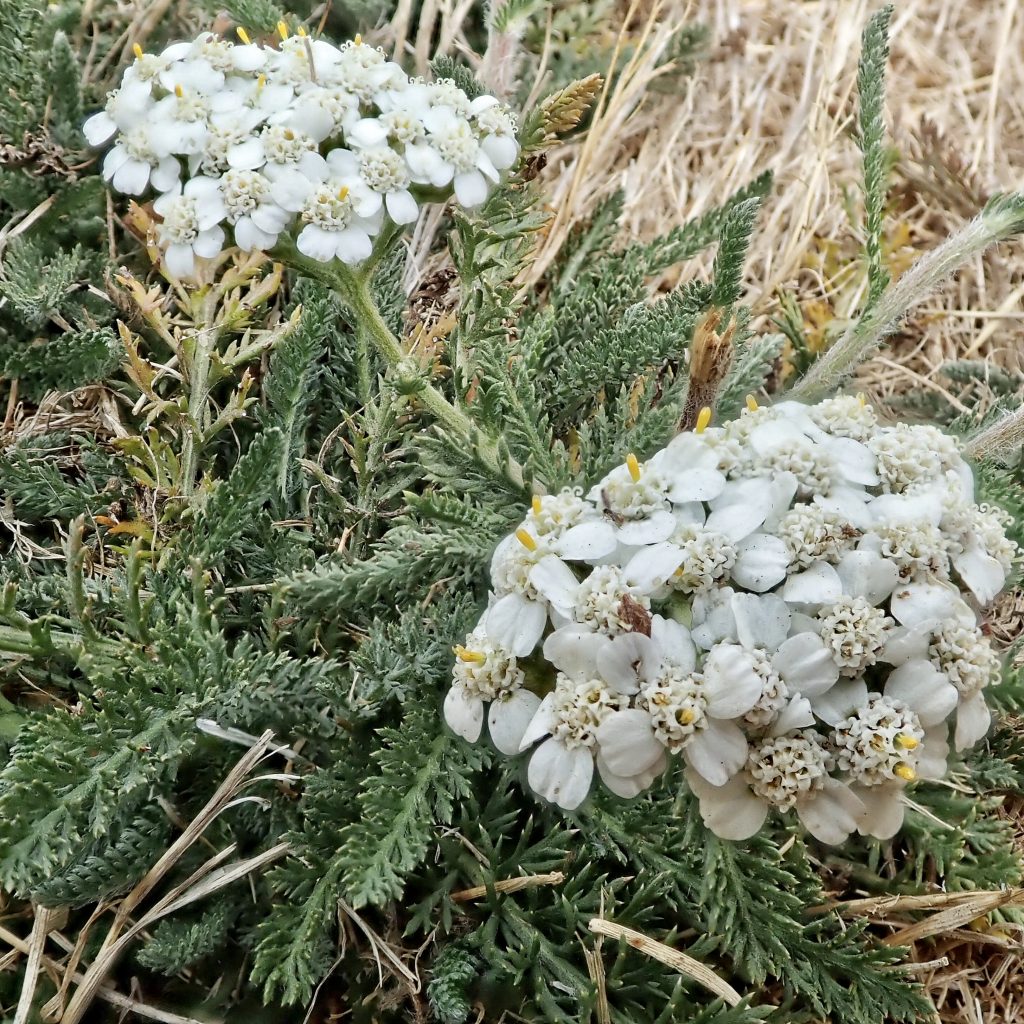
Very interesting profile on a cool plant! Thank you ☺️